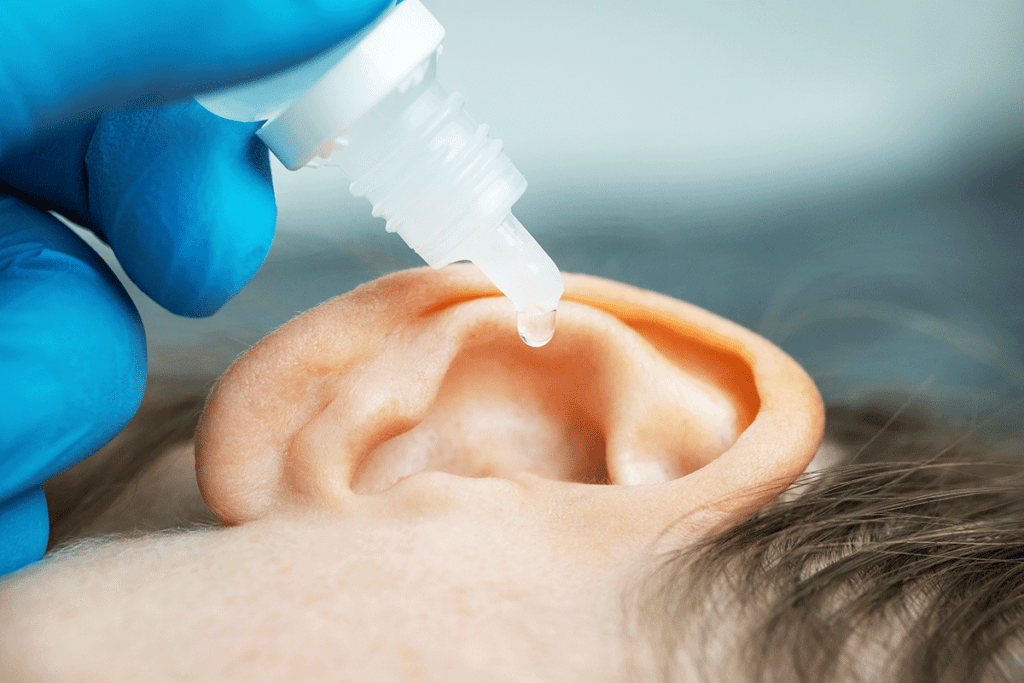Blog
Hydrogen Peroxide in Ear: Safe Cleaning Methods and Precautions
Hydrogen peroxide in ear is a common method people use to remove excess earwax and keep their ears clean. This simple over-the-counter solution can be helpful when used correctly. However, it’s essential to understand the right way to apply it to avoid any harm. This guide will explore how hydrogen peroxide works, the benefits and risks, and the proper steps for safe usage.
What is Hydrogen Peroxide?
Hydrogen peroxide is a colorless liquid commonly used as a disinfectant or cleaning agent. It has various uses in medical and household applications. When it comes to ears, hydrogen peroxide can help break down earwax, making it easier to remove. The solution bubbles when it reacts with earwax, loosening and softening the wax, which is then expelled naturally from the ear.
Why Use Hydrogen Peroxide in Ear?
Using it in ear offers a quick and affordable way to deal with earwax buildup. Earwax is necessary as it protects the ear canal from dirt and bacteria. However, too much earwax can lead to discomfort, temporary hearing loss, or even infections. Hydrogen peroxide can safely and effectively clear excessive wax if used properly.
Benefits of Hydrogen Peroxide in Ear
Hydrogen peroxide in ear can offer several benefits:
- Removes Excess Earwax: One of the primary reasons people use hydrogen in ear is to manage earwax buildup. The bubbling action helps loosen hard or impacted wax, making it easier to drain naturally.
- Fights Infections: It has antibacterial properties, which can help prevent or treat minor ear infections. This makes it a good option for cleaning out earwax without risking bacterial growth.
- Affordable and Accessible: It is inexpensive and widely available at any pharmacy or store, making it a convenient choice for regular ear care.

How to Use Hydrogen Peroxide in Ear Safely
To use hydrogen peroxide in ear safely, follow these steps:
- Choose the Right Solution: Use a 3% hydrogen solution, which is safe for ear cleaning. Avoid using stronger concentrations as they can irritate the ear canal.
- Lie Down: Lay on your side with the ear you want to clean facing up. This position makes it easier to keep the hydrogen inside the ear.
- Apply the Solution: Using a dropper, put 5-10 drops of hydrogen into your ear. You’ll feel some fizzing as the solution starts to break down the wax.
- Wait: Let the solution sit in your ear for about 5 minutes. This allows the hydrogen peroxide to do its job.
- Drain: After 5 minutes, sit up and tilt your head to the side to let the solution and loosened wax drain out. You can use a clean tissue or towel to catch any liquid.
- Rinse: Gently rinse the ear with warm water to remove any remaining wax or solution.
Risks and Precautions of Using Hydrogen Peroxide in Ear
While hydrogen peroxide in ear can be helpful, it’s essential to be aware of the potential risks:
- Irritation: Using too much hydrogen peroxide or applying it too frequently can lead to ear canal irritation. This might cause discomfort, itching, or dryness.
- Damage to Ear Drum: If you have a perforated (torn) eardrum, you should never use hydrogen peroxide in your ear. The solution could enter the middle ear and cause infections or other damage.
- Overuse: Regular use of hydrogen peroxide may strip your ear of protective wax, which increases the risk of ear infections.
- Ear Sensitivity: Some people might have sensitive ears that react poorly to hydrogen. If you experience pain, dizziness, or discomfort during use, stop immediately and consult a doctor.
When to Avoid Using Hydrogen Peroxide in Ear
It’s crucial to know when you should avoid using hydrogen in your ear. Consult a healthcare professional in the following situations:
- Ear Infection: If you suspect you have an ear infection, consult your doctor before attempting home treatment. Hydrogen peroxide may worsen the infection in some cases.
- Perforated Eardrum: Do not use hydrogen peroxide if you’ve had an injury or suspect a perforated eardrum.
- Chronic Ear Problems: People with chronic ear problems, such as frequent infections or surgery, should avoid using hydrogen peroxide without medical advice.
Alternative Ear Cleaning Methods
If hydrogen peroxide isn’t the best option for you, there are alternative ways to clean your ears:
- Ear Drops: Over-the-counter ear drops are specially designed to soften earwax. These solutions are gentle and often contain oils or mild chemicals that are safe for the ear canal.
- Warm Water: Flushing the ear gently with warm water can help remove excess wax. However, care must be taken to avoid forcing water deep into the ear.
- Professional Cleaning: If you’re unsure about cleaning your ears at home, or have a lot of earwax, it’s best to visit a doctor. Professionals use safe and effective techniques to remove wax without risking damage to your ears.
Conclusion: Is Hydrogen Peroxide in Ear Safe?
Hydrogen peroxide can be an effective method to clean earwax, but it must be used carefully. Always use a 3% solution, and never use it more than once a week to avoid irritation. If you experience any issues like pain or infection, seek professional medical advice. While hydrogen peroxide can help maintain hygiene, it’s not a solution for everyone, so consult a doctor if you’re uncertain.
